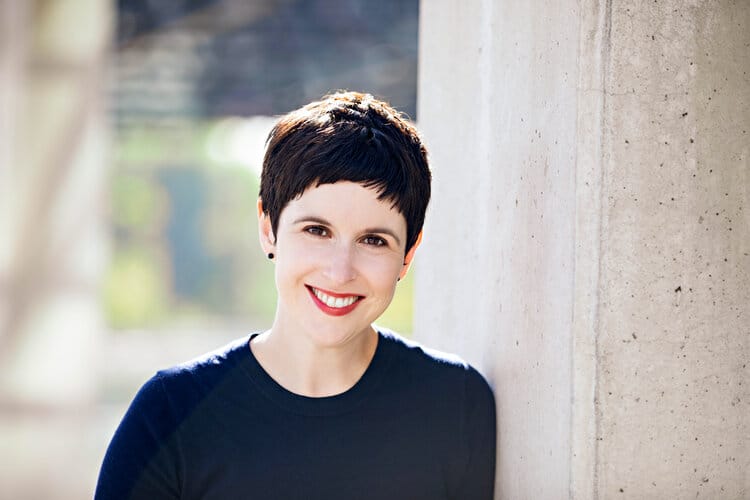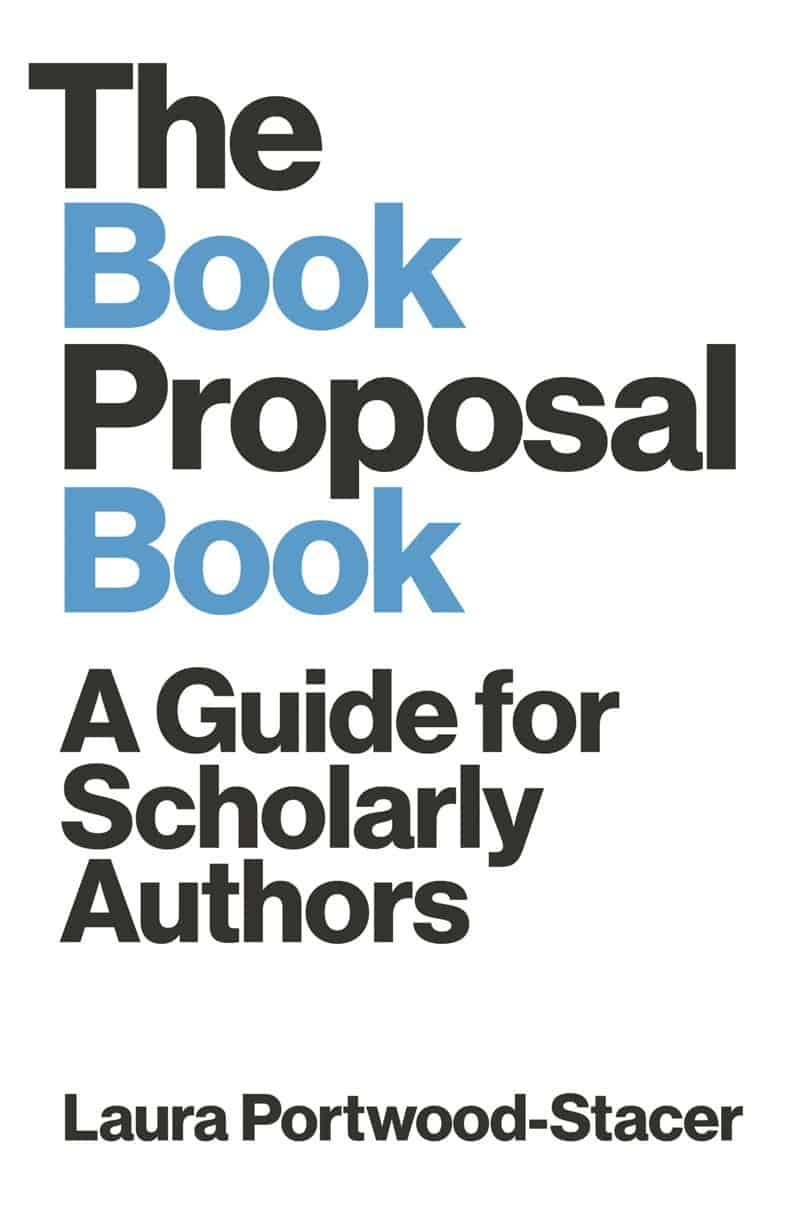How to Write an Academic Book Proposal: 6 Questions for Laura Portwood-Stacer
You want to convince a publisher that your scholarly book project is exactly what they need? Then crafting a compelling book proposal should be at the top of your priority list. Laura Portwood-Stacer has helped hundreds of academics do just that. We asked the publishing consultant and developmental editor your most burning questions.
This post is part of a series that provides practical information and resources for authors and editors.
Writing a scholarly book can be difficult but getting a publisher to “bite” can feel even harder. How do I approach the process? What elements belong in a catchy proposal? And how do I get an editor’s attention? These and similar questions cause many aspiring authors sleepless nights. But help is at hand.
Laura Portwood-Stacer, PhD, is a publishing consultant and developmental editor based in Los Angeles. She has taught media and cultural studies at the University of Southern California and New York University and is the founder of Manuscript Works, a consultancy service for academic book authors. Over the last years, Laura has helped hundreds of academics across the humanities and social sciences with getting their work out in the world. She compiled her experiences as well as advice for aspiring scholarly authors in her book “The Book Proposal Book: A Guide for Scholarly Authors”, issued by our publisher partner Princeton University Press.

To help you make your pitch stand out, we asked Laura six questions about the ins and outs of developing and presenting a compelling book proposal.
De Gruyter: How can academic authors find out which publisher could be a good fit for their work?
Laura Portwood-Stacer: When identifying good-fit publishers, I like to work backward from the books they publish. I encourage authors to think about recent books that they want to be in conversation with. These could be books on a similar topic or books that are taking a similar theoretical or methodological approach within their field. Often, authors will notice that the same publishers turn up repeatedly on their lists of recent books, which indicates that these publishers have a consistent commitment to a particular kind of book and may be receptive to an additional book in the same vein.
DG: Which first steps would you recommend to a scholarly author who wants to get their work published?
LPS: After identifying some potential publishers, I recommend that authors articulate what features of their book would make it a good fit for those publishers (and the types of readers who tend to buy books from those publishers). Again, this could be topic, approach, disciplinary contribution, or some other aspect that will draw readers in. Thinking about your book in these terms helps you position it the way publishers will — as a marketable commodity that must find enthusiastic readers, not just a piece of scholarship that will be kept on file in a library or database.
I also think authors should try to identify their intended audiences early on in the process. It’s important to know whether you’re trying to reach experts in a particular disciplinary subfield or trying to participate in broader interdisciplinary conversations or even trying to speak to readers outside the academy altogether. That will affect not only which publishers you reach out to but how you pitch the book (and ultimately how you write the manuscript). If you try to pitch a book as appealing to everyone, it will be much harder to write and much harder to find a publisher for it. This might be surprising to authors who think the more potential readers the better, but publishers have their specialties and are more likely to jump at a book that’s a clear fit for their niche and their existing marketing channels.
DG: What elements does a good book proposal consist of?
LPS: “The Book Proposal Book” walks readers through each of the common elements publishers ask for in their proposal submission guidelines. While some publishers use different terms for these components, they can essentially be translated as:
- a working title
- a project overview
- a table of contents with summaries of each chapter
- a discussion of intended audiences
- a list of recent books your book is in conversation with
- technical specifications such as total word count and number of images
- the current status of the manuscript and an estimated completion date
- a brief biography of yourself as the author
Some publishers will ask for sample chapters along with proposal submissions, as well as additional information that’s useful for the press, such as suggested reviewers or a full CV. Always check the submission guidelines. If you are missing something or aren’t sure how to complete some part of the proposal, that usually won’t kill your chances, but try to address everything to the best of your knowledge, because this will make it easier for an editor to say yes to seeing more.
DG: What are the most common mistakes you encounter when helping prospective authors with their proposals?
LPS: Publishing can be a subjective industry and most editors aren’t expecting perfection, especially from first-time authors. So I hesitate to point to “mistakes,” per se. But there are some commonly missed opportunities where authors don’t use the proposal as effectively as they could to make the case that their project should become a published book. One big one is not using the project description to convey the broader stakes of the research. An editor should understand from your proposal not just what your book is about topically but also how the driving thesis of the book could be applied to other research objects or sites and why your findings will matter to readers beyond the handful of disciplinary experts who are invested in similar questions. Another thing authors can do to make a stronger case for why their research will appeal to readers as a book (versus a series of journal articles or essays) is to think carefully about chapter order and use the chapter summaries to explain not just what’s in each chapter but why the chapter appears where it does and how it supports the book’s overall thesis. Showing that you’ve been thoughtful about the structure of your book instills confidence in a publisher that you will produce an appealing manuscript.
Are you looking for the right press to publish your academic work? Find out here whether De Gruyter might be the right partner for your project!
DG: In your experience, what excites an acquisition editor at a publishing house or university press?
LPS: Of course scholarly editors are interested in fresh intellectual ideas, but I think authors sometimes set the bar too high for themselves, thinking they need to have a brilliant theoretical intervention in order to get a book published. Publishers are above all interested in connecting books with readers, so if you have a project whose appeal to a well-defined readership is clear, that goes even further than originality, in my opinion. That could mean having a strong voice or style, having a topic in an up-and-coming area that presses are eager to build their lists in, or tackling a perennial question in a way that’s particularly teachable or accessible. I think editors are especially excited by authors who share their goal of reaching readers and show an interest in active collaboration with the press to make sure the book finds its audience. You don’t need a fully conceptualized promotion plan when you pitch your book, but it’s a plus if you indicate that you’re ready to take part in promotional activities and have networks you can tap to publicize your book when it’s out.
DG: Which resources would you recommend to aspiring scholarly authors?
LPS: I wrote “The Book Proposal Book” to be a comprehensive guide for aspiring scholarly authors, especially those who may be lacking in mentorship or other forms of cultural capital. It not only demystifies the publishing process and the elements of a successful proposal, but it gives readers a structured plan to navigate the process step by step, from identifying presses to reaching out to editors to handling peer review. I also offer a number of online programs to support authors with various parts of the writing and publishing process. These can be found at courses.manuscriptworks.com, and my free weekly newsletter with additional tips and how-tos is at newsletter.manuscriptworks.com. In addition, many publishers’ websites (like this one!) have their own resources for authors, so I encourage you to check those out as well.
Learn more in this related title from Princeton University Press
[Title image by Jacob Ammentorp Lund/iStock/Getty Images Plus]
